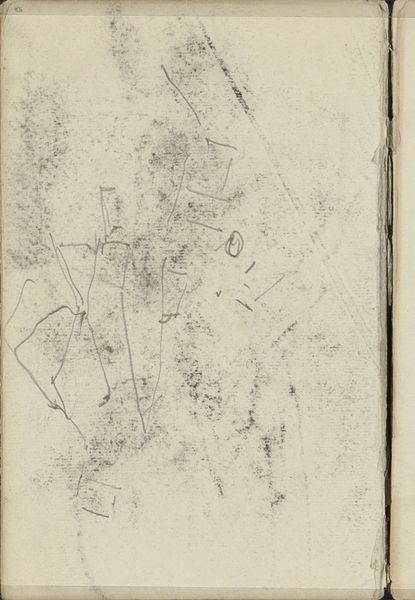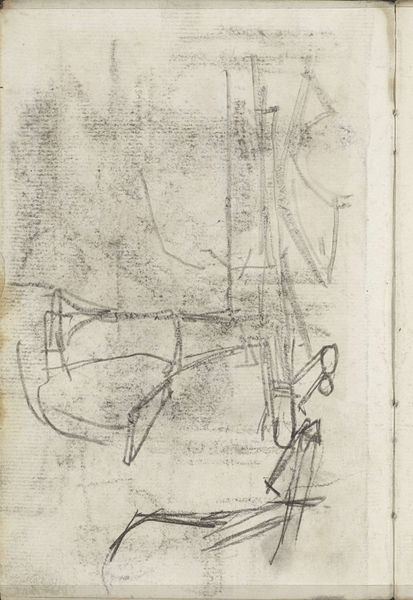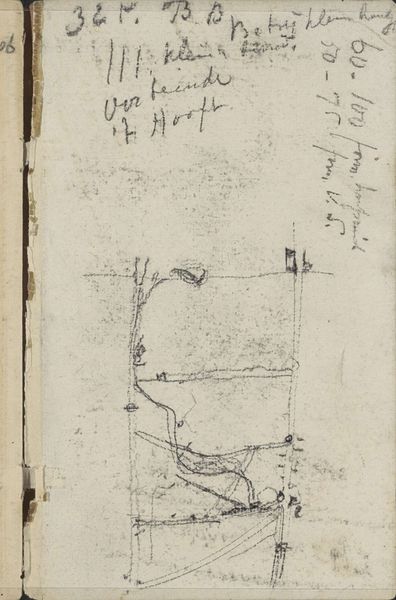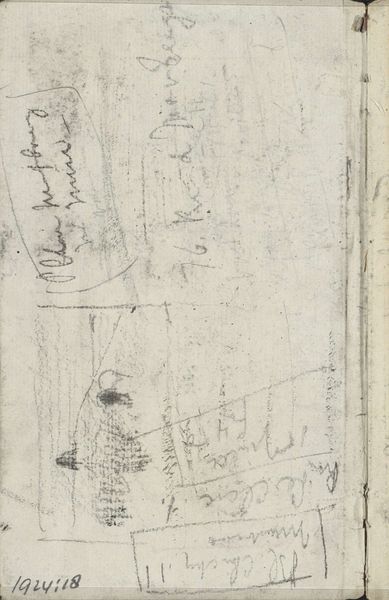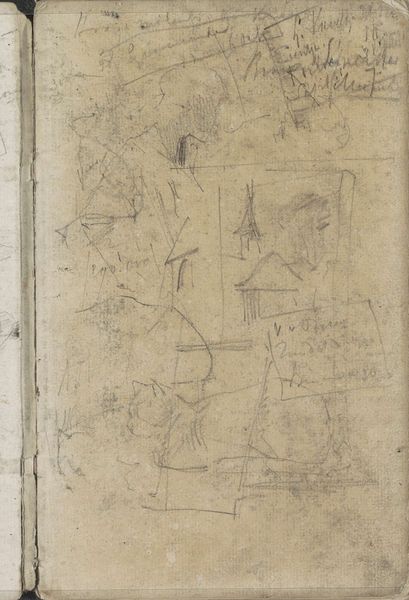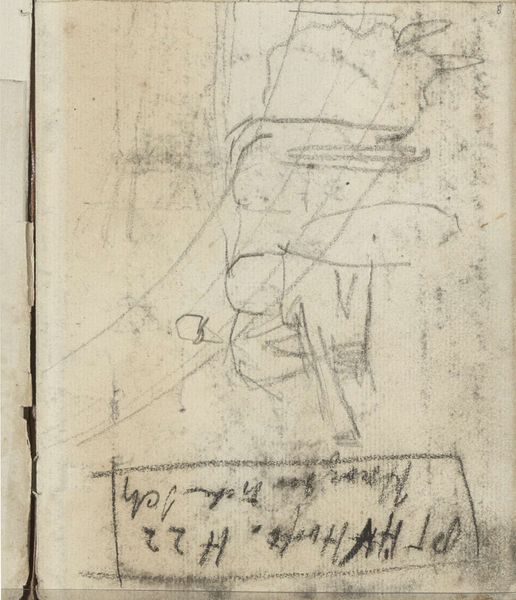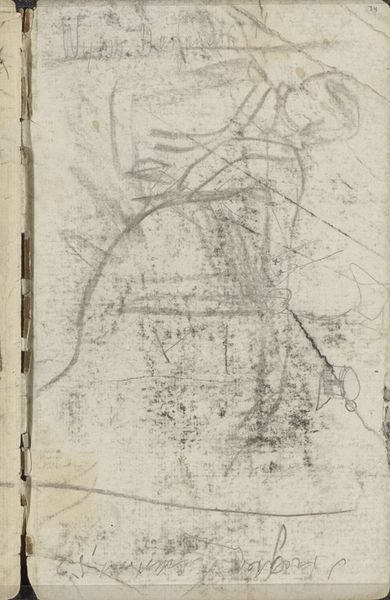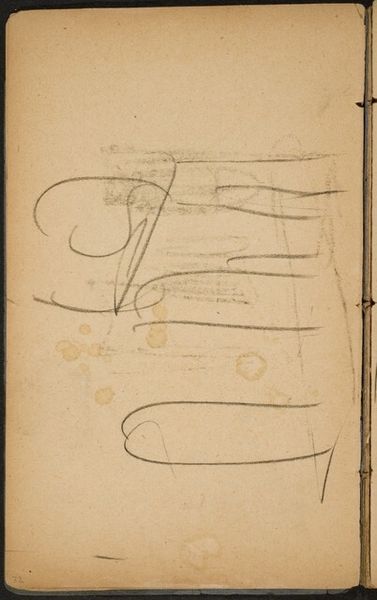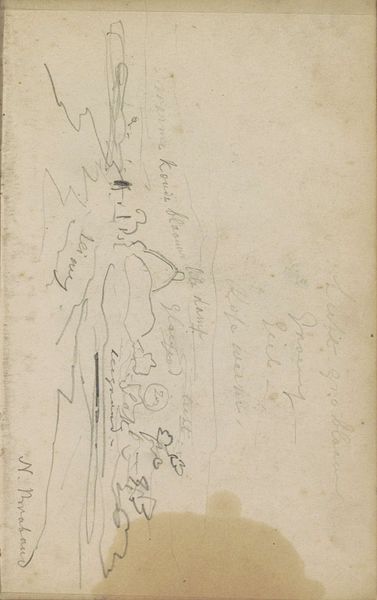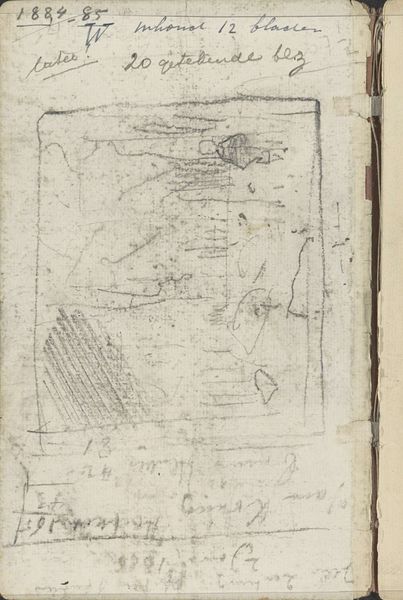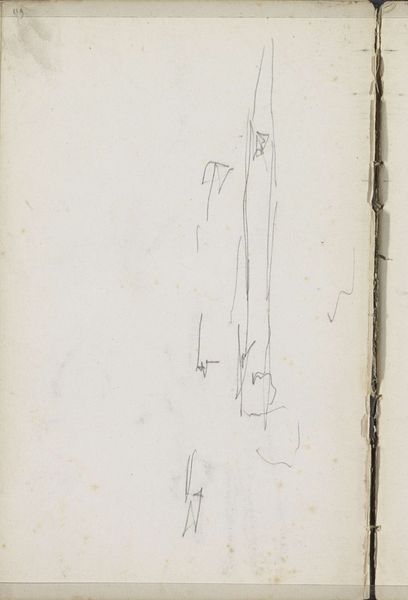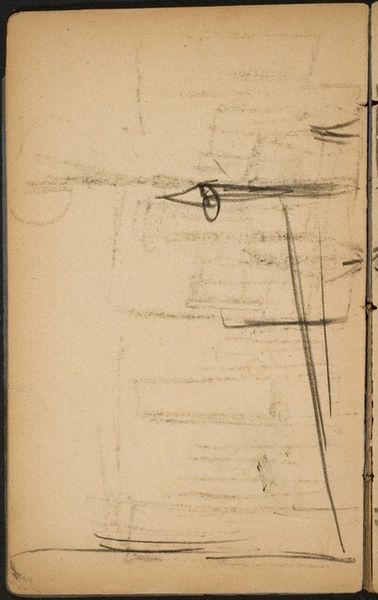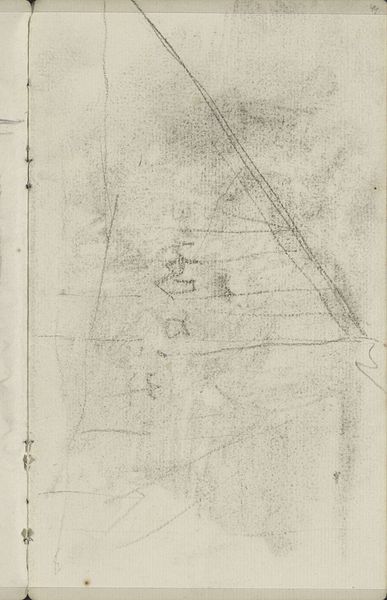
drawing, paper, pencil
#
drawing
#
impressionism
#
sketch book
#
landscape
#
figuration
#
paper
#
personal sketchbook
#
pencil
#
line
#
sketchbook drawing
#
sketchbook art
Copyright: Rijks Museum: Open Domain
Curator: We are looking at "Studie," a pencil drawing on paper, likely from somewhere between 1883 and 1886, by George Hendrik Breitner. What's your take on it? Editor: Chaotic beauty comes to mind. A flurry of lines hinting at… figures, maybe? There’s a raw energy, almost violent, despite being just a humble pencil sketch. The thin lines create the illusion of the form trying to emerge from the very sheet, but at the same time it is enclosed and limited by the sketchbook and page boundaries. Curator: Breitner was all about capturing fleeting moments. Trained as an academic painter, he quickly moved towards this type of impressionistic work, very spontaneous. Think of it almost like a snapshot—not meant to be perfect, but authentic. A captured thought. Editor: Authentic to the production constraints, sure. Note the visible binding; these are the margins and limitations of his material conditions, right there on the page, and the way that informs the composition. It begs the question: How do sketchbooks and cheap materials shape and limit, enable or affect our art making and aesthetics, not to mention the kind of narratives around high art and craft, labor and the artistic genius? Curator: Precisely! It's not a grand statement, it's a fragment. You can imagine Breitner just quickly pulling out his sketchbook in the street, jotting down what he sees, with an immediacy that more traditional methods wouldn't allow. Editor: You can almost feel the rough texture of the paper, the quick scratching of the pencil. We see his process laid bare. What were the costs for such material and production? Breitner was not known for glorifying things but taking a hard look at working conditions, materials, and realities, so this becomes almost a record of class structures during the era. Curator: It’s almost voyeuristic. You get this incredibly intimate glimpse into his creative process. In his other paintings there are studies of horses, or workers…I see these same figures in this sketch, it reminds me of when he started moving from traditional studies towards everyday life observation as a main motif. Editor: In the everyday materials themselves lie stories waiting to be uncovered. It’s not just about the aesthetic representation, but about all the material and social relations involved in production from start to finish. It challenges us to reconsider the boundaries of art. Curator: For me it underscores how much intention is revealed in its imperfections. It's lovely, in that way. Editor: For me it is in what its imperfections reveal about the history, materiality, and means behind the creation of an artwork like this.
Comments
No comments
Be the first to comment and join the conversation on the ultimate creative platform.
